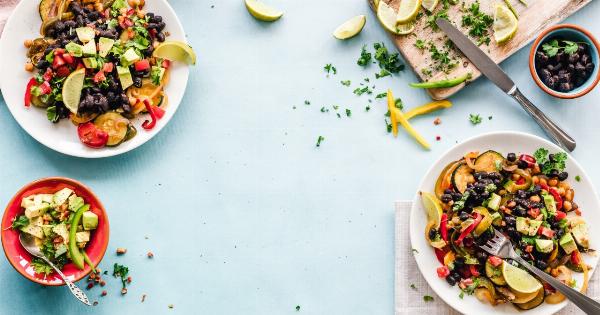Healthy eating habits are a crucial component of maintaining a healthy lifestyle. A key aspect of making healthier food choices is portion control. When it comes to portion sizes, it can be challenging to determine what is too much or too little.
Different foods also have different serving sizes, making it even more complicated. However, there’s a simple trick to help you estimate portion sizes with just a deck of cards.
Why Portion Control is Essential
Portion control is an essential component of a healthy lifestyle. Eating too much can lead to weight gain and other health problems such as high blood pressure, heart disease, and diabetes.
On the other hand, under-eating can result in deficiencies in essential nutrients and vitamins.
Therefore, being mindful of the portion sizes of the food you consume is essential in maintaining a healthy weight and overall wellbeing.
What is the Deck of Cards Method?
The deck of cards method is a simple technique that uses a deck of cards as a visual reference to help you estimate portion sizes. Each card in the deck represents a different food group and serving size.
For instance, one serving of lean meat, fish, or poultry should be about the size of a deck of cards, or about three ounces. Similarly, one serving of cooked pasta should be about the size of a tennis ball, or approximately one cup.
The deck of cards method is a simple and portable way to estimate portion sizes when eating out or preparing meals at home.
The Different Serving Sizes
It’s essential to understand that different foods have unique serving sizes. Here are some general guidelines to keep in mind when estimating serving sizes:.
- One serving of cooked pasta or rice should be approximately one cup or the size of a tennis ball.
- One serving of raw or cooked vegetables should be approximately one cup or the size of a baseball.
- One serving of fresh fruit should be approximately the size of a tennis ball.
- One serving of dairy, such as cheese, yogurt, or milk, should be approximately the size of a 2-inch cube or the size of a tennis ball.
Estimating Meat Portions
One of the most challenging foods to estimate serving sizes for is meat. However, the deck of cards method makes it easy to determine appropriate portions.
One serving of lean meat, fish, or poultry should be approximately the size of a deck of cards or about three ounces. This means that one serving of meat should be approximately the size of your palm or a bar of soap.
When estimating your meat portions, keep in mind that fatty meats have a higher calorie count than lean meats. Therefore, it’s essential to choose lean cuts of meat and watch your portion sizes carefully.
Using Your Hands to Estimate Portions
In addition to the deck of cards method, using your hands is another way to estimate portion sizes. Your hands are a convenient and portable way to measure your foods and ensure you’re eating the right amount.
Your palm can help you estimate meat portions since a three-ounce serving of meat is approximately the size of your palm or a deck of cards.
Your fist can help you estimate your vegetable portions since one serving of cooked or raw vegetables is approximately the size of your closed fist.
Your thumb can help you estimate your fat portions. Since one serving of fat should be approximately one tablespoon, estimating this amount can be daunting.
However, you can use your thumb instead — one serving of fat is approximately the size of your thumb or one tablespoon.
Tips for Estimating Portions
The deck of cards method and using your hands to estimate portion sizes are excellent ways to make healthier food choices. Here are some additional tips to help you estimate portions:.
- Read food labels to understand the recommended serving sizes.
- Use a food scale to weigh your food portions.
- Measure your food portions using measuring cups.
- Be mindful of your plate size; smaller plates may help you eat less.
- Practice mindful eating, which involves eating slowly and paying attention to your food and hunger cues.
Conclusion
Portion control is an essential component of a healthy lifestyle. Estimating portion sizes can be challenging, but using the deck of cards method and your hands can make it easier.
Being mindful of your food portions can help you make healthier choices and avoid overeating. Remember to pay attention to your hunger cues and practice mindful eating to make the most out of your meals.






























